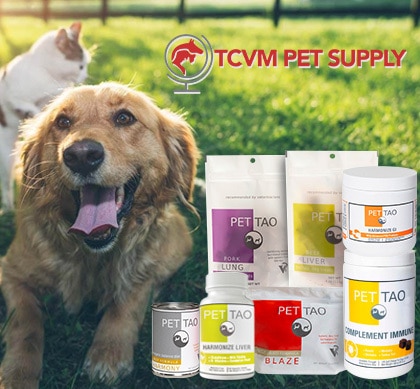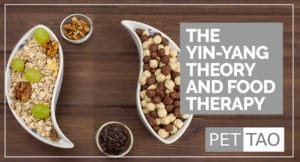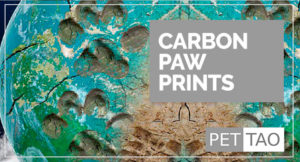
How do you choose the right food for your pet?
Your options range from a standard can of pet food from the grocery store, to home cooking, to mail ordering freeze-dried or raw diets.
So which one is right for your cat or dog?
We’re here to help you find out!
Why Choose Holistic Pet Food?
You’ve probably heard all about “holistic dog food” or “holistic cat food.”
But, what does “holistic” mean?
From a marketing perspective, not much.
But, from our perspective, the term “holistic” is of great importance.
PET | TAO Holistic Pet Products combines Western nutritional science and Eastern Food Therapy to create the first truly holistic pet food.
You know what nutrition is, but are you familiar with Eastern Food Therapy?
Or why you would want pet food with an Eastern philosophy?
A Convenient Diet Based on Eastern Food Therapy
Eastern Food Therapy is a branch of Traditional Chinese Medicine (TCM).
Veterinarians adapted TCM to create Traditional Chinese Veterinary Medicine (TCVM).
TCVM sees health and well-being as a state of balanced energy.
All foods have a specific energetic purpose to warm the cold, cool the hot, or maintain neutrality.
The energy of an animal is always changing because of diet, current health status, and life circumstances.
Eastern Food Therapy is the philosophy behind feeding each animal for a purpose.
Feed healthy pets an energetically balanced diet, such as the PET | TAO Harmony diet.
PET | TAO’s other Formulas include:
- Canine Harmony Limited Ingredient Formula
- Encourages and supports energetic harmony. Designed for dogs with allergies and sensitive stomachs.
- Canine Solution Blaze Formula
- Encourages and supports energetic warming.
- Canine Solution Chill Formula
- Encourages and supports energetic cooling.
- Canine Solution Zing Formula
- Encourages and supports the body’s Blood component.
Clinical Nutrition in Pet Food
You are what you eat.
The same is true for your pet!
Dog food ingredients and cat food ingredients are important.
Varying agencies regulate pet food nutrition and pet food safety, but pet parent diligence is necessary.
Practicing veterinarians founded PET | TAO Holistic Pet Products.
In conjunction with Eastern Food Therapy, they used traditional, Western nutritional science to create recipes for dog food and cat food.
Herbal Medicine for Pets
Why are so many people turning to natural remedies for dogs’ and cats’ ailments?
- Provides gentle treatment of chronic conditions.
- Exhibits few side effects.
- Is often used instead of, or in conjunction, with Western treatments.
- Enhances the effectiveness of some Western treatments.
Two predominant philosophies exist in the realm of herbal treatment: Eastern herbal medicine (Traditional Chinese Veterinary Medicine or TCVM) and Western herbal medicine.
Eastern Herbs vs. Western Herbs
Eastern herbal medicine, a branch of TCM, developed as part of Chinese culture dating back 5,000 years.
In Western culture, the use of herbs for the treatment of illness dates back to the ancient Greeks and Romans, to the indigenous peoples of the British Isles, and to Native Americans.
In Eastern herbal medicine, veterinarians tailor unique combinations of herbs. Practitioners use as many as 50 or more herbs together for a synergistic solution to the disease and its underlying imbalance.
Western herbalists use herbs in the same manner as pharmaceuticals. Western herbal medicine focuses on treating the symptoms only, without attention to the underlying causes of disease or illness.
Index of Eastern Herbal Terms
- Shen is the term for “spirit” or “mind.” In Eastern philosophy, Shen literally stands for our “presence.”
- Qi is one of the body’s vital substances.
- Refers to “natural energy,” “life force,” or “energy flow.”
- Is the central underlying principle in traditional Chinese medicine.
- Xue (Blood) is a denser form of Qi nourishing the body, supports the Shen, and moistens body tissue.
- Jing (Essence) is a very precious substance.
- The term “Jing” includes prenatal jing, postnatal jing, and kidney jing.
- Yin-Yang describes how apparently opposite or contrary forces are actually complementary.
- The Yin-Yang Theory is the fundamental principle and the most important theory in TCVM.
- Yin-Yang is the foundation of TCVM diagnosis and treatment and is the underlying aspect of the body as a whole.
- Channels are connecting passages through which Qi and blood circulate the body to regulate the organs and tissues; also called meridians.
- The wind is one of the six pernicious (subtly harmful) influences in Chinese medicine, Wind is a major cause of illness.
- Wind combines with other pathogens such as heat, cold, dampness, and others to cause illness.
- Wind-Heat is generally associated with body heat, a red face, hyperactivity, rapid pulse, fever, and thirst.
- Wind-Cold saps the body’s energy, movement is cumbersome, the tongue is pale, the pulse is slow, those afflicted may sleep excessively, curled up in a ball.
- Wind-Damp blocks the flow of life energy. Symptoms include deep pain, stuffiness, stiff joints, heavy limbs, arthritis.
- Bi-Syndrome Disorder resulting from the obstruction of channels or meridians, sluggishness of Qi, and poor blood circulation.







